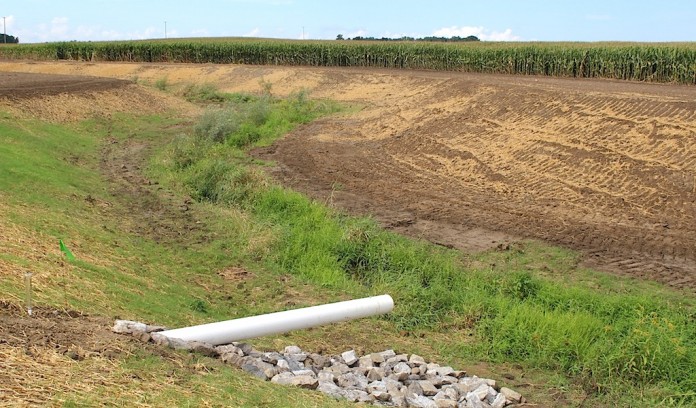Upon my impending retirement with the Geauga County Soil and Water Conservation District, I was asked to reminisce on how times may have changed over the past twenty years. One of my favorite responsibilities were technical assistance calls, whereby I had the opportunity to play the role of educator, arbitrator or mediator with local landowners.
The two most frequent issues we discussed involved drainage and agricultural use issues. The two topics are addressed in the Ohio Revised Code by the Ohio Drainage Law and the Ohio Agricultural Pollution Abatement Law.
Drainage
First, the Ohio Drainage Law. Ohio law defines surface water as water diffused over the ground and derived from falling rain and melting snow; the water retains its status as surface water until it reaches a well-defined channel in which it merges with other waters.
Geauga County receives an annual rainfall total of approximately 40 inches per year, along with an average yearly snow total exceeding 100 inches. This adds up to quite a bit of stormwater, and all this water runoff creates all sorts of problems.
Identifying natural runoff patterns and routes may aid individuals in understanding that water coming onto their property from a neighbor is not necessarily the result of mischievous intent, but merely runoff following a path of less resistance. Water has no regard to personal property boundaries, following many of the innumerable streams, creeks and watercourses established centuries ago.
Lake Erie
The vast majority of runoff in Geauga County will eventually merge into one of the three major river systems that originate in our county, the Chagrin, Cuyahoga or Grand Rivers, all of which flow directly into Lake Erie.
The watersheds of these three rivers roughly divide Geauga County into three parallel drainage basins oriented in a north-south direction. The west watershed is that of the Chagrin River, the central being the Cuyahoga, and the east basin belonging to the Grand River.
Reasonable use
The Ohio Drainage Law revised its treatment of this drainage issue circa 1980 by the application of the Reasonable Use Doctrine.
This doctrine states “a possessor of land is not unqualifiedly privileged to deal with surface water as he pleases, nor is he absolutely prohibited from interfering with the natural flow of surface waters to the detriment of others. Each possessor is legally privileged to make a reasonable use of his land, even though the flow of surface waters is altered thereby and causes some harm to others. He incurs liability only when his harmful interference with the flow of surface water is unreasonable.”
Several definitions of the word reasonable may come to mind, including sensible, rational, practical and, hopefully, equitable. Therefore, management or construction activities such as collecting, concentrating or diverting runoff may at times be interpreted as reasonable.
The Geauga SWCD does not have the legal authority to make judgements on drainage conflicts. These disputes are a matter of civil law and landowners may exercise private legal action to resolve their dispute. The SWCD is able to assist landowners who voluntarily wish to improve drainage on their own property.
Agricultural pollution
The second issue of discussion is the Ohio Agricultural Pollution Abatement Law. This law was enacted in 1979 in response to the 1972 Federal Clean Water Act.
Pollution is defined as “the failure to use conservation practices in farming or silviculture operations to abate wind or water erosion of the soil, or to abate the degradation of the waters of the state by animal waste or soil sediment including substances attached hereto.”
The objective being to protect waters of the state, the phrase is nearly inclusive of all streams, lakes, ponds, marshes, waterways, wells, springs, irrigation and drainage system, surface and underground, natural or artificial. The Ohio Department of Agriculture governs farming operations and the Ohio Division of Forestry regulates silviculture operations.
To further complicate matters, the Ohio Right to Farm Law (ORC 303 and 519) prohibits local zoning from regulating agricultural activities by landowners who follow acceptable standard farming practices.
Agricultural activities may only be prohibited in incorporated cities, villages or within certain platted subdivisions. One wonders if all these diverse land uses within the community are compatible.
Consult and compromise
Perhaps the best way to avoid these disagreeable situations is to respect and consult with your neighbor. The point being, to paraphrase a common idiom, you and your neighbor may literally be “joined at the hip,” and only a fair compromise may bring about a reasonable solution.













